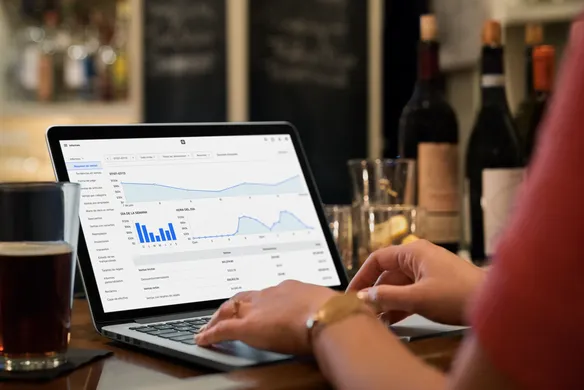Table of contents
With Square Point of Sale, you can use Square Analytics for powerful business insights to help track revenue and make more informed business decisions. Learn more about Square Analytics.
When will I break even? It’s one of the biggest questions you’ll ask yourself when starting and running a small business. Breaking even is a healthy sign of growth and can be the difference between success and failure, hence the importance of conducting a break-even analysis. This will help you determine fixed costs (like rent) and variable costs (like materials) so you can set your prices appropriately and forecast when your business will reach profitability. Central to the break-even analysis is the concept of the break-even point (BEP).
What is the break-even point for a business?
A business’s break-even point is the stage at which its revenue equalises with its costs. Once you determine that figure, you can take a hard look at all your costs — from rent and labour, to materials — as well as your pricing structure.
You can then then ask yourself these questions:
- Are my prices too low or my costs too high to reach break-even point in a reasonable amount of time?
- When can I expect to break even?
- Is my business sustainable as a result?
Calculating your break-even point
There are two basic formulas for determining a business’s break-even point. One is based on the number of units of products sold. The other is based on points on sales in GBP.
- To calculate break-even point based on units: Divide fixed costs by the revenue per unit minus the variable cost per unit. The fixed costs are those that do not change regardless of units are sold. The revenue is the price for which you’re selling the product minus the variable costs, like labour and materials.
Break-Even Point (units) = Fixed Costs ÷ (Revenue Per Unit – Variable Cost Per Unit)
- To calculate break-even point based on sales in $AUD: Divide your fixed costs by the contribution margin. The contribution margin is calculated by subtracting variable costs from the price of a product. This amount is then used to cover the fixed costs.
Break-Even Point (Sales in $AUD) = Fixed Costs ÷ Contribution Margin
Contribution Margin = Price of Product – Variable Costs
To better explain what all of this means, let’s look at a break down of the formula components:
- Fixed costs.
Fixed costs are not affected by the number of items sold. Examples include rent paid for storefronts or production facilities, computers and software. Fixed costs also include fees paid for services like graphic design, advertising and PR.
- Variable costs.
Variable costs are those that vary with output, such as wages, utilities and materials used in production.
- Contribution margin.
The contribution margin is calculated by subtracting an item’s variable costs from the selling price. So if you’re selling a product for $100 and the cost of materials and labour is $40, the contribution margin is $60. This $60 is then used to cover the fixed costs. Any money left after that represents your net profit.
- Contribution margin ratio.
This figure is usually expressed as a percentage. It’s calculated by subtracting your fixed costs from your contribution margin. From there, you can determine what you need to do to break even, like cutting production costs or raising your prices.
- Profit earned following your break even.
Once your sales amount equals your fixed and variable costs, you have reached the break-even point. The company will report a net profit or loss of $0, and any sales beyond that point contribute to your net profit.
How to use a break-even analysis
A break-even analysis enables you to determine your break-even point. But this isn’t the end of your calculations.
After crunching the numbers, you need to ask yourself whether your current plan is realistic or if you need to raise prices, cut costs or both. You should also consider whether your products will be successful in the market. Although the break-even analysis determines the number of products you need to sell, there’s no guarantee you’ll hit that number.
You should ideally conduct this analysis before you start a business so you have a good idea of the risk involved. But if you’re an existing business, conduct this analysis before launching a new product or service to determine whether or not the potential profit is worth the startup cost.
A break-even analysis isn’t just useful for startup planning. Here are some ways that businesses can use it in their daily operations and planning.
- Prices.
If the analysis shows that your current product costs are too low for you to break even in your desired timeframe, you might want to raise them. Check the cost of comparable items before you do so to ensure you don’t price yourself out of the market.
- Materials.
Is the cost of materials and labour unsustainable? Research how you can maintain a high level of quality whilst lowering your costs.
- New products.
Before you launch a new product, take into account both the new variable costs as well as the fixed costs.
- Planning.
When you know exactly how much you need to make, it’s easier to set longer-term goals. For example, if you want to expand your business and move into a larger space with higher rent, you can determine how much more you need to sell to cover new fixed costs.
- Goals.
If you know how many units you need to sell or how much money you need to make to break even, it can serve as a powerful motivational tool for you and your team.
Every small business owner dreams of break-even point and what comes beyond. The good news is that you don’t have to wait around and speculate. Using a break-even analysis, you can project when and how you’ll reach break-even point. This in turn will enable you to stop dreaming and start taking measures to make sure you get there.
![]()











